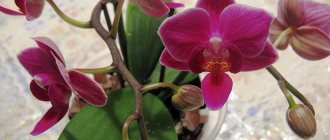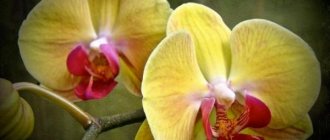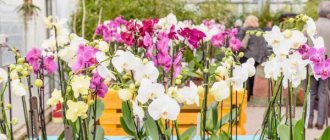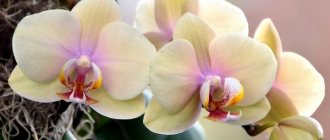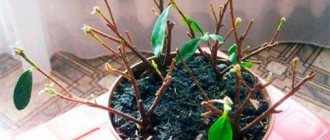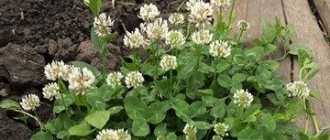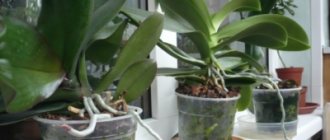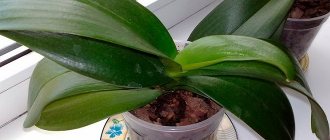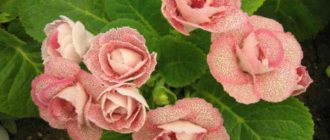Orchids burst into our lives and quickly gained popularity. In flower shops, the selection of these exotic beauties is incredibly wide. There are different varieties and colors to suit every taste. Orchids have even replaced traditional bouquets - the blooming miracle has become an excellent gift in those cases when you want to give a person something more practical than cut plants that die after a couple of days.
Orchids burst into our lives and quickly gained popularity 16 Orchids are good when they bloom. Caring for most varieties at home does not require much effort, but even despite this, situations are not uncommon when the blossoming inflorescences dry out and nothing comes to replace them. On the windowsill there remain lush green leaves and a tangle of aerial roots climbing in all directions. But this is not exactly what is expected from an orchid.
Related article:
Everything you need to know about orchid blooms
What should I do: throw away the plant and buy a new one, or can I somehow correct the situation?
Why doesn't an orchid bloom at home?
The natural habitat for orchids is areas with a tropical climate. If the plant's conditions are very different from natural conditions, you can wait a long time for flowering. The main reasons for the lack of flowers are:
- Lack of minerals. Orchids usually grow in small pots where the soil becomes depleted quickly. The plant needs to be fed periodically. Mineral fertilizers should contain less nitrogen, it ensures the growth of green mass, and the formation of peduncle buds requires potassium, magnesium, and phosphorus. First, water the soil abundantly with water so as not to burn the roots. Dry fertilizers are used to make an aqueous solution of low concentration; an excess of minerals is also detrimental to the orchid.
- Incorrect watering. The orchid has fairly wide leaves, from which moisture quickly evaporates. During the period of active growth, the plant must be watered quite often, approximately 2–3 times a week. In winter, on the contrary, you should not moisten the soil too much. Water for irrigation should be soft. It is better to use boiled or filtered water at room temperature. If the roots are wet, drops of condensation are visible, there is no need to water the plant. Excess moisture contributes to the formation of pockets of rot on the roots.
- Violation of temperature and lighting conditions . Orchids are very sensitive to temperature fluctuations. The difference between day and night should not exceed 4°C. In the warm season, the optimal air temperature is 18 – 25°C, in winter – not lower than 15°C. Lighting should be sufficient, but it is advisable to avoid direct sunlight so as not to cause burns on the leaves.
- Unsuitable soil mixture. The soil for the orchid should provide a minimum of moisture around the root and free air circulation. For this reason, plants are never planted in garden soil. The pot is filled with a substrate consisting of moss, peat, and coarse sand. It is better to purchase a ready-made soil mixture designed specifically for growing orchids.
- Look at the root: features of the location of the root system in a pot. The orchid puts out strong, strong roots covered with spongy tissue. In nature, they allow them to attach themselves to tree trunks. At home, a pot helps keep the plant upright. It should be made of transparent material to provide access to sunlight. It is necessary to have holes on the bottom for water drainage, and on the walls for air ventilation. The roots should be freely located in the pot; they often stick out. Transparent plastic pots are best suited for orchids. Through it you can clearly see how the root system develops. When replanting a plant, such a container can be easily cut so as not to damage the roots during removal.
Role in the life of a plant
The arrow of an orchid performs a reproductive function. It most often produces babies - small copies of the orchid itself. After they produce a couple of leaves and 3-4 roots, they can be rooted.
In addition, the peduncle is involved in the appearance and development of flowers and buds , nourishes them with water and nutrients, thereby continuing to perform a reproductive function. Each orchid flower contains a seed capsule in which the seeds ripen after pollination by insects. An orchid can also be grown from seeds, but this can happen either in a natural environment - the tropics, or in laboratories, since this process is long and intricate.
How to make an orchid bloom: the most effective techniques
In tropical forests, orchids grow under the cover of dense foliage; for them there is no concept of changing seasons. The most unpretentious species is phalaenopsis. It can bloom continuously for 11 months. But it is not always possible to achieve such a result at home. If a favorable climate has been created, but the orchid does not bloom for 2 years, you can use some effective methods to force out the peduncle.
- A sharp drop in temperature. During the day, the plant should be in a warm room, and at night you can open a window or balcony to lower the temperature to 16 - 18°C. In the summer, a garden is perfect for this. The result is an acceleration of photosynthesis and the accumulation of carbon dioxide, which is used for flowering.
- Creating arid desert conditions . It is necessary to increase the time intervals between waterings. In summer it can be 4 days, in winter up to a week. The roots of the plant must be dry. If this method is used correctly, the lower leaves will soften slightly.
- Hot shower. Before starting the procedure, the bathroom is filled with steam by turning on boiling water. The plant is placed in a bath and doused with warm water for 15 minutes, the temperature of which is about 35°C. At this moment, abundant moisture absorption occurs through the roots and intense release through the leaves. In about a week, the orchid should release flower stalks.
- Improved lighting. Different types of orchids require different light intensities. If the plant does not bloom, it may be that there is not enough light. You need to move the pot to a more illuminated place or purchase a special fluorescent lamp.
- Pruning the peduncle. Each peduncle contains several buds that are in a dormant state. To achieve flowering, the arrow is cut approximately above the third bud.
- Transfer. Lack of flowering may be caused by soil depletion. This is noticeable in the leaves of the orchid. If the growing leaves are smaller in size than the old ones, or are deformed, then the plant needs to be transplanted into new soil.
Some types of orchids produce a flower stalk only after reaching three years of age. If the plant has 5–8 shoots, then it is mature enough and ready to flower. Only healthy orchids can be made to bloom. Weakened and diseased plants should gain strength to produce a flower branch.
How does a plant shoot an arrow?
The peduncle pecks at the bottom of the stem, under the leaf. Although there are chaotic locations. The appearance of a new arrow occurs under the influence of certain factors: temperature, humidity, lighting, watering. Under unfavorable conditions, the formation of a flowering shoot will be impossible.
Reference! The flowering process usually begins in the fall, when the orchid has gained strength and strength over the summer. And in winter there comes a period of rest. However, different varieties have different life cycles.
The orchid has released a peduncle: what to do next
From the moment the orchid shoots the arrow, about 2 months will pass until the first flowers open. During this period, it is necessary to create comfortable conditions for unopened buds to bloom.
You can place a small container of water next to the pot to further humidify the air. If the heating is on at home, the plant can be sprayed with warm water. Watering is done as usual, as the soil dries.
In the cold season, the peduncle needs additional light. For additional lighting, you can use a phytolamp. It does not dry out the air and provides a large amount of bright light. Daylight hours during this period should be at least 12 hours.
The orchid does not like movement and reacts to it by slowing down its growth. When you need to rearrange the pot, place it with the same side facing the light as it stood before.
Before the first flower appears, you can feed the plant with fertilizers containing phosphorus and potassium, which have a beneficial effect on the formation of flower buds. Once the orchid has bloomed, there is no longer a need for fertilizer.
Peduncle of a plant
The arrow that the orchid shoots and on which the buds appear is usually called a peduncle. This part of the stem, as a rule, appears from the growth point (we talked more about what the growth point is, why it is needed, and also what are the reasons for its absence here). The flower shoot consists of dormant and flower buds. Accordingly, buds appear from flower buds, while dormant ones remain dormant until the end of flowering. A lateral peduncle or baby may appear from dormant buds.
The flower arrow usually has a bright green appearance along its entire length and grows differently. The peduncle can bend, in the form of a pig tail, and then strive vertically upward. It can also deviate in any direction. It is during the growth process that the flowering shoot should not be touched and, especially, the plant should not be replanted.
The most popular flowering varieties of orchids are Phalaenopsis and Cymbidium . The latter is famous for its long arrow with large inflorescences, which is often used for cutting. But, for example, in Dendrobiums the role of the peduncle is played by the bulb (read more about what a bulb and a pseudobulb are, as well as the differences between a true and a false one, here). .
How to care for an orchid after flowering
The period when plants bloom lasts from 5 to 12 months. After the flowers dry, do not immediately cut off the peduncle. You should make sure that the orchid has stopped blooming. The arrow is carefully examined to determine further actions. If there is a green tip, additional buds may appear.
If the peduncle turns yellow and begins to dry out, flowering has ended. But the plant continues to receive nutrients from the flower branch. Therefore, the arrow is cut after complete drying.
The cut is usually made, leaving the 3 lower buds; the stump should be at least 2 cm. In the summer, a young shoot - a baby - may appear on the flower branch. With its help, the plant is propagated. To do this, the baby is left on the stem for about 6 months, until roots and 2 leaves grow. Phalaenopsis can develop 2–3 offspring on each peduncle.
Otherwise, caring for the plant after flowering does not differ much from other periods. During dormancy, you can reduce the amount of feeding to once a month. If the soil dries out quickly after watering, and roots protrude from the bottom hole of the pot, the orchid needs to be replanted. The period immediately after flowering is the most suitable for this procedure.
Before transplanting, water the plant abundantly and carefully remove it from the pot. The roots should not be unrolled. Blackened and dried shoots are removed. The soil mixture can be pre-heated over a fire to kill pests. To create drainage, a layer of crushed granite stone is placed on the bottom of the pot. The orchid is placed in the new soil at the same level as before. After transplantation, watering is not needed. Spraying can be done.
How is it different from other parts of the plant?
Often, novice flower growers cannot determine what the orchid has produced: a root or an arrow . Indeed, only a florist with many years of experience can accurately identify the part of a plant, especially at first. But after some time, when the process reaches 1 cm in length, this will not be difficult to do.
The main difference is that the tip of the peduncle is sharp and the same color as the shoot, and the root is rounded and pinkish in color. Another part of the plant, which is also often confused with the arrow, can be distinguished by its shape - the root shoot. It has the shape of a boat.
Immediately after its appearance, the root begins to look down (stretches towards the soil and nutrients in it), and the arrow begins to look up (stretches towards the light), just like the root baby. The root is smooth, and the arrow contains "scales". The root most often grows from the neck of the plant trunk, the shoot - between the leaf plates.
We invite you to watch a video on how to distinguish the peduncle from other parts of the orchid:
What to do during this process?
- Place the container with the flower in a well-lit place. Windows facing south, southeast and southwest are suitable for this.
- If daylight hours last less than 12 hours, then the orchid must be placed under an additional light source (fluorescent lamp, phytolamp).
- Provide systematic moderate watering with settled or boiled water at room temperature.
- Continue to feed the plant if this was done before the arrow was released.
As a top dressing, ready-made mineral fertilizers for orchids containing phosphorus and potassium are usually used. They are sold in specialized stores. If fertilizing has not been done before, then you should not start with the release of the arrow - the orchid may “freeze”.
We invite you to watch a video containing recommendations for caring for orchids that have released a peduncle:
